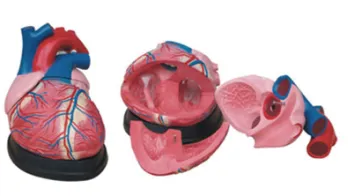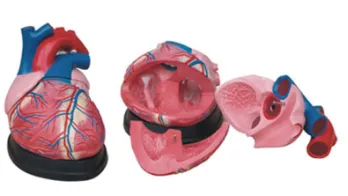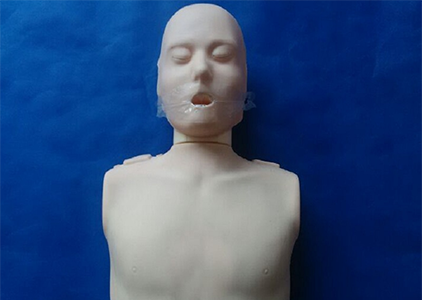
Cardiac anatomical models play a vital role in medical practice, providing great convenience and support to physicians, medical teams, and patients. The following is a detailed explanation of the application of cardiac anatomical models in medical practice:

Surgical planning and simulation:
Before performing heart surgery, doctors can use the cardiac anatomy model to carry out detailed surgical planning. The model can accurately display the structure, size, position and lesions of the patient's heart, and help doctors determine the surgical path, select surgical instruments and make surgical plans.
By simulating the operation on the model, doctors can predict the problems and risks that may occur during the operation, so as to formulate countermeasures in advance to ensure the smooth operation.
Teamwork and communication:
The cardiac anatomy model is an important tool for communication and collaboration among medical teams. Doctors can use the model to show team members the structure and lesions of the heart, giving team members a more intuitive understanding of the condition and treatment options.
Through surgical simulation and discussion on the model, the medical team can jointly develop surgical strategies, clarify their respective responsibilities and tasks, and improve surgical efficiency and success rate.
Patient education and communication:
Cardiac anatomy models can also be used for patient education. Doctors can use the model to explain the structure, function and lesions of the heart to patients, so that patients can more intuitively understand their condition and treatment options.
By performing surgical simulations and demonstrations on the model, doctors can show patients the surgical process and possible risks, increasing patient trust and satisfaction.
Clinical Research and Teaching:
In clinical studies, cardiac anatomical models can be used to simulate the pathogenesis and pathological changes of heart disease. Researchers can use the model to conduct experimental studies and explore new treatments and drugs.
In medical education, cardiac anatomical model is an important teaching aid for medical students to understand and master cardiac anatomical structure. By observing and manipulating the model, students can more intuitively understand the structure and function of the heart and improve the learning effect.
Development of personalized treatment plan:
With the development of 3D printing technology, the anatomical model of the heart can be personalized to the specific condition of the patient. Doctors can use the patient's medical image data to print out the heart anatomy model that is completely consistent with the patient's heart structure, which provides strong support for the development of personalized treatment plans.
In conclusion, cardiac anatomy model has wide application prospect and value in medical practice. With the continuous progress and innovation of technology, it is believed that the cardiac anatomy model will play a more important role in the future medical field.







Sophie Asveld
February 14, 2019
Email is a crucial channel in any marketing mix, and never has this been truer than for today’s entrepreneur. Curious what to say.
Sophie Asveld
February 14, 2019
Email is a crucial channel in any marketing mix, and never has this been truer than for today’s entrepreneur. Curious what to say.